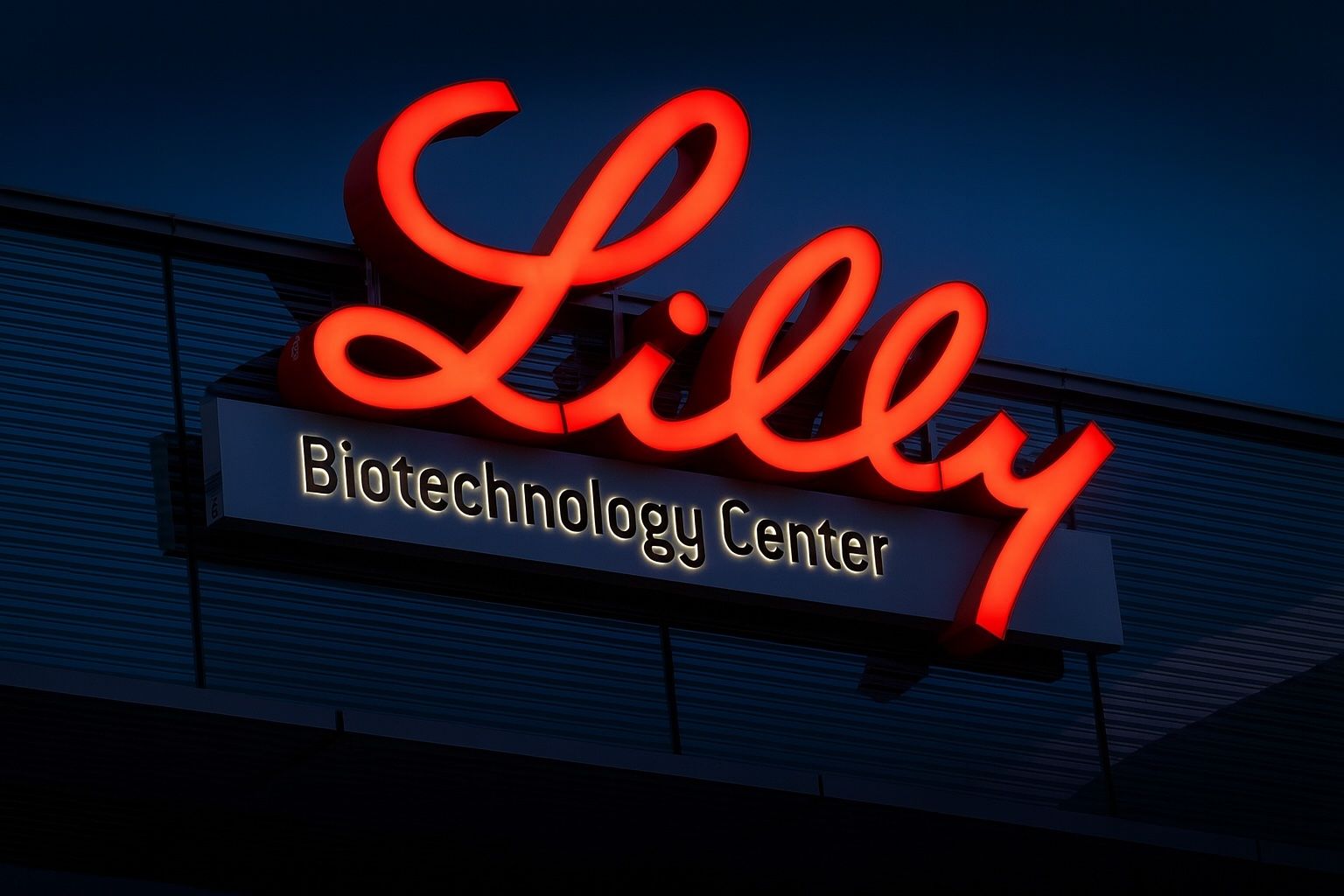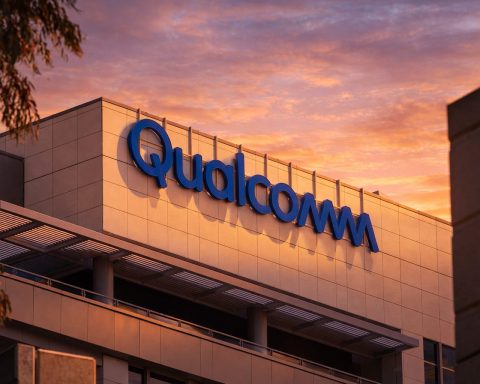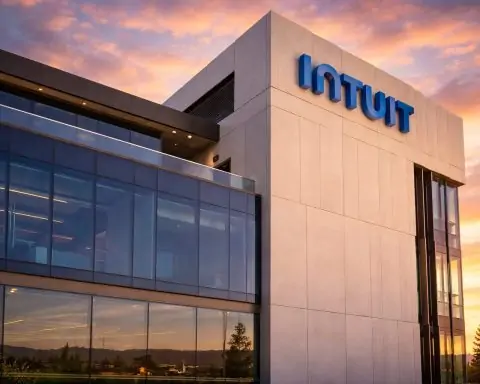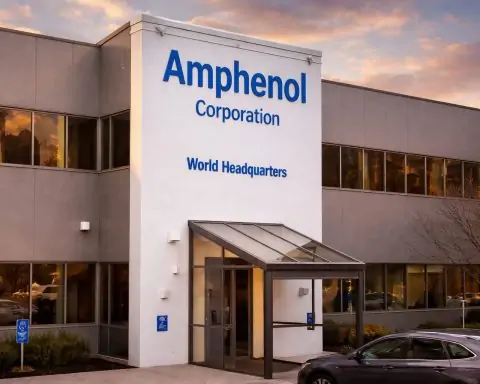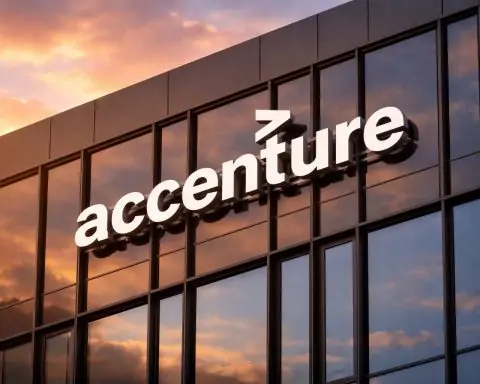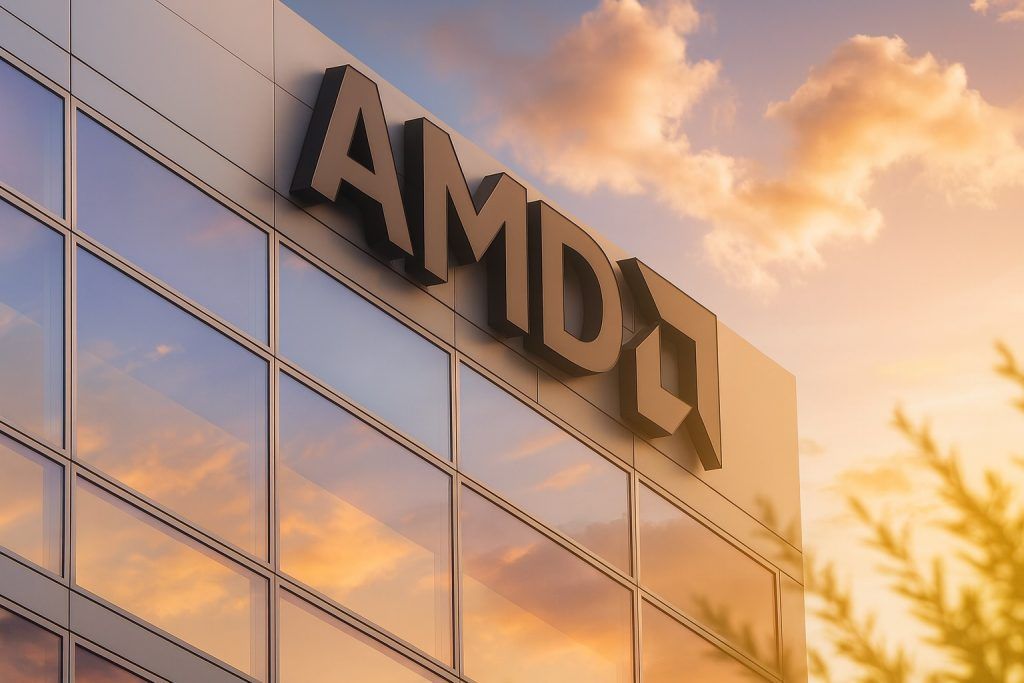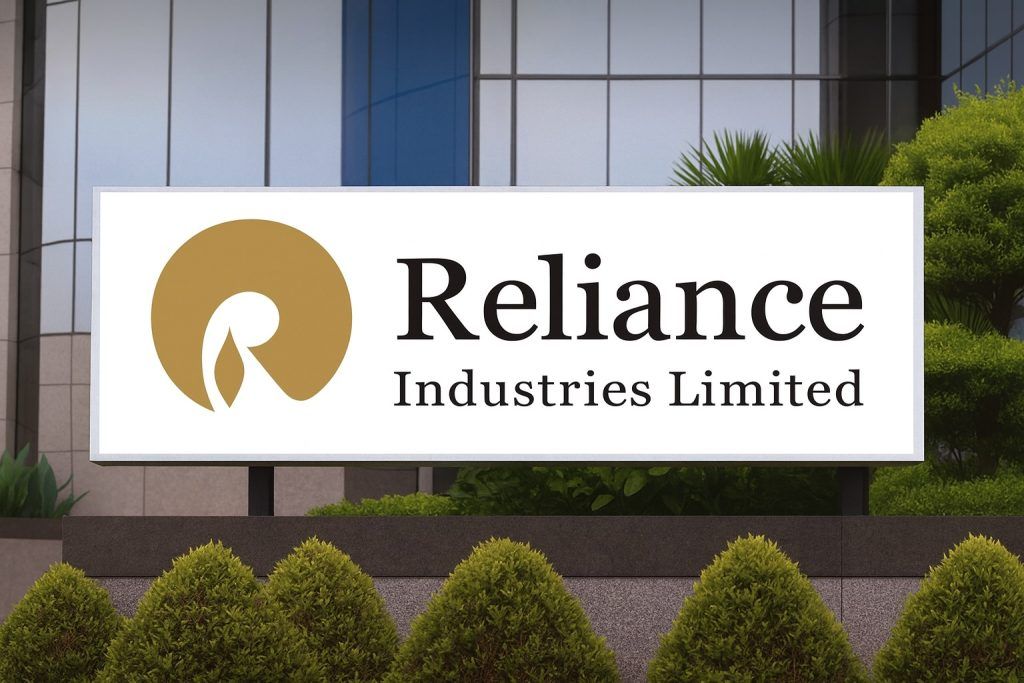- Stock Near Highs: Eli Lilly (NYSE: LLY) stock spiked to record territory in early October, topping out around $832 intraday on Oct. 1 amid a frenzy over its obesity drug franchise and promising Alzheimer’s treatment news [1]. Shares have since pulled back about 4% as of Oct. 17 after President Donald Trump vowed to cut prices for weight-loss drugs, sparking volatility [2]. Despite the dip, Lilly’s stock remains not far below its peak and has strongly outperformed the broader market in recent weeks [3].
- Obesity Drug Dominance: Lilly’s diabetes and weight-loss medications – notably Mounjaro (tirzepatide) and its newly launched obesity injectable ZepBound – are driving explosive growth. Together they now command roughly 57% of U.S. GLP-1 (glucagon-like peptide-1) prescriptions, surpassing rival Novo Nordisk’s ~43% share [4]. Lilly is also developing an oral GLP-1 pill, orforglipron, which in Phase 3 trials helped patients shed about 12% of body weight with blood-sugar benefits, outperforming Novo’s oral semaglutide on some measures [5] [6].
- Alzheimer’s Advances: The company’s Alzheimer’s antibody donanemab (brand name Kisunla) gained approval in Europe in late September for early-stage Alzheimer’s [7], after U.S. regulators updated its label in July to improve safe usage. Lilly also, in partnership with Roche, just received FDA clearance for a blood test (Elecsys pTau181) to aid early Alzheimer’s diagnosis [8] – a development that could speed uptake of treatments like Lilly’s Kisunla [9]. Analysts say a successful roll-out of donanemab could open a market “ten times the current Alzheimer’s segment,” potentially adding $4 billion in annual sales [10].
- Red-Hot Financials: Lilly’s earnings are surging on the back of its new medicines. First-half 2025 revenue jumped ~40% year-on-year, with Q2 2025 sales at $15.56 billion (up 38% YoY) and EPS nearly doubling [11] [12]. Management cited “strong sales of Mounjaro and ZepBound” as the growth engine [13]. In August, Lilly raised its full-year 2025 revenue guidance to $60–62 billion (from ~$58–60B) [14], underscoring booming demand for its diabetes/obesity drugs. Volume for key products is up ~50% despite some pricing pressure [15] [16].
- Bullish Outlook, With Caveats: Wall Street remains broadly bullish on Lilly. Most analysts rate LLY a “Buy,” with TipRanks data showing 22 analysts at Strong Buy and 18 at Buy [17]. Consensus 12-month price targets cluster in the high-$800s to mid-$900s, implying ~10–20% upside from current levels [18] [19]. Some see even more upside – Bloomberg data shows nearly all analysts bullish with a street-high target around $960 [20]. However, a few skeptics warn that Lilly’s valuation (near 49× earnings, richer than peers) already reflects lofty expectations [21], and that competition (especially from Novo Nordisk) plus any policy or clinical setbacks could temper the stock’s meteoric rise [22] [23].
LLY Stock Skyrockets, Then Dips on Pricing Jitters
Eli Lilly’s stock has been on a tear in 2025, powered by optimism around its new drug innovations. Shares surged dramatically at the start of October – leaping from about $726 at the end of September to as high as $832 by October 1 [24]. This double-digit jump in just days far outpaced the broader market and reflected euphoric sentiment toward Lilly’s growth prospects [25]. Analysts attributed the rally to a perfect storm of positive news: strong recent earnings, insider buying, and fresh research fueling excitement about Lilly’s obesity and Alzheimer’s franchises [26]. For example, one study in late September suggested GLP-1 weight-loss drugs (like Lilly’s Mounjaro) may significantly reduce Alzheimer’s risk, adding to the buzz around Lilly’s pipeline [27].
However, mid-October brought a dose of volatility. On Oct. 16, President Trump publicly vowed to slash the cost of Ozempic – the popular (and pricey) GLP-1 drug made by Novo Nordisk – “from around $1,000 a month to $150” [28]. He dubbed it “the fat loss drug” and said price cuts would come “pretty fast” [29]. The comments, implying government-negotiated price reductions ahead, rattled the whole weight-loss drug sector. Novo Nordisk’s stock slid ~6% on the news, and Lilly’s shares fell roughly 4% in sympathy as investors braced for potential pricing pressure [30]. Lilly’s stock, which closed around $819 on Oct. 16, dipped into the $780s in early trading the next day [31] [32].
Market watchers noted that Trump’s remarks highlighted an emerging risk: political and regulatory scrutiny of ultra-expensive weight-loss medications. GLP-1 drugs like Ozempic and Mounjaro often cost about $1,000 per month in the U.S. [33], straining patients and insurers and drawing government attention. The Biden administration (through Medicare’s new price negotiation program) had already targeted GLP-1 drugs for future cost reductions [34] [35]. Trump’s intervention, under a “most favored nation” pricing agenda to align U.S. drug prices with lower international levels, added to those concerns [36].
Still, many analysts see the pullback in LLY as a temporary reaction rather than a thesis-changing event. Weight-loss treatments remain a massive, underpenetrated market – and Lilly has a commanding position. One trader even argued the post-Trump selloff was an overreaction, noting Lilly had proactively taken steps like cutting some prices, expanding manufacturing, and maintaining dialogue with policymakers [37]. Indeed, despite this week’s dip, Lilly’s stock is still up around 7% for 2025 to date [38] and remains within sight of its all-time high. The brief scare over pricing policy hasn’t derailed the broader optimism around Lilly’s trajectory.
Obesity Drug Boom: Lilly’s Weight-Loss Franchise on Fire
Lilly’s unprecedented growth in 2025 is being fueled by an obesity drug boom, as the company’s innovative therapies tap into soaring demand for weight loss and diabetes treatments. Its injectable GLP-1 drug Mounjaro (originally approved for Type 2 diabetes) has seen uptake far beyond initial expectations, thanks to its potent weight-loss benefits. In late 2022 and 2023, many patients began using Mounjaro off-label for weight management, setting the stage for a formal FDA approval of tirzepatide for obesity. Lilly launched the obesity-dedicated brand ZepBound in late 2023, and the two versions of tirzepatide (for diabetes and obesity) combined have quickly become blockbusters. In Q2 2025 alone, Mounjaro and ZepBound generated over $8.5 billion in revenue – accounting for more than half of Lilly’s quarterly sales [39].
By 2025, Lilly has effectively overtaken its rival Novo Nordisk in the critical U.S. market for GLP-1 drugs. As of this fall, Lilly’s products make up about 57% of U.S. prescriptions in the GLP-1 category (which includes diabetes and weight-loss injections like Mounjaro, Ozempic, Wegovy, etc.), vs. roughly 43% for Novo’s drugs [40]. This is a stunning shift given Novo was first-to-market with Ozempic and sister drug Wegovy. Lilly’s ability to rapidly scale supply – and the remarkable efficacy of tirzepatide, which often produces greater weight loss than older semaglutide treatments – have driven its gains in market share. “We believe significantly more patients can benefit from incretin therapy,” Lilly CFO Lucas Montarce noted, pointing out that only ~4% of eligible obesity patients are currently on GLP-1 medications [41]. In other words, 96% of the potential patient pool is untapped – a huge runway for growth if Lilly can continue to capture a large portion of new entrants.
Lilly is not stopping at injections; it’s pushing aggressively into next-generation weight-loss medicines. A centerpiece of this effort is orforglipron, its experimental oral GLP-1 pill. In 2025, orforglipron delivered impressive late-stage trial results, suggesting it could become the first market-leading weight-loss pill in a field currently dominated by injectables. In a head-to-head Phase 3 trial for type 2 diabetics, orforglipron lowered blood sugar and body weight significantly more than Novo Nordisk’s Rybelsus (the only approved oral GLP-1 so far) [42]. And in a separate 72-week obesity trial, patients on orforglipron lost about 12.4% of their body weight on average, with a safety profile comparable to injectable GLP-1 drugs [43]. “The data strengthens our conviction that Eli Lilly is well positioned to maintain leadership in the GLP-1 market,” said Daniel Barasa of Gabelli Funds, citing orforglipron’s superior efficacy and convenient pill dosing [44]. BMO Capital Markets analysts echoed that the results “give increased confidence” in the pill’s competitive profile [45].
Crucially, Lilly is moving fast to capitalize on orforglipron. It plans to file for regulatory approval by year-end 2025 for the obesity indication, followed by a diabetes filing in 2026 [46]. The company aims to launch the pill in major markets (U.S., EU, UK, Japan, China) in rapid succession, potentially within weeks of each other, once approvals are secured [47]. Analysts already forecast orforglipron to be a mega-blockbuster, with some estimating $10 billion+ in peak annual sales [48]. Novo Nordisk is racing to bring its own oral obesity drug (a higher-dose semaglutide) to market, but Lilly’s head start and strong data could give it an edge in what may become a fierce “pill battle” over the huge population of patients averse to injections.
Beyond GLP-1 agonists, Lilly is broadening its metabolic pipeline to fortify its obesity/diabetes franchise. It has invested in next-generation drugs like dual GIP/GLP-1 agonists and amylin analogs that could be used alongside GLP-1 therapy [49] [50]. The company even sued certain telehealth and compounding pharmacies earlier this year for allegedly selling unauthorized versions of Mounjaro, signaling Lilly’s intent to defend its turf amid the gold rush for weight-loss treatments [51]. Overall, with obesity and diabetes drugs driving unprecedented sales growth, Lilly appears to be firmly in the driver’s seat of the $100+ billion GLP-1 market – at least for now.
Alzheimer’s Breakthroughs and Other Catalysts
While obesity drugs are the headline, Lilly’s story is also about making headway in Alzheimer’s disease (AD) – a field long considered the “graveyard” of pharma due to decades of failures. In 2023, competitor Biogen (with partner Eisai) finally won approval for Leqembi, the first amyloid-targeting antibody shown to modestly slow early Alzheimer’s. Lilly has been hot on their heels with donanemab, its own antibody therapy. Donanemab (branded Kisunla in some markets) showed in trials that it can significantly slow cognitive and functional decline in early-stage Alzheimer’s patients [52].
2025 has been a pivotal year for Lilly’s Alzheimer’s ambitions. In July, the FDA approved an updated label for donanemab to optimize dosing and safety, suggesting U.S. regulators are comfortable with the drug’s profile [53]. Then on Sept. 25, 2025, European regulators approved donanemab for use in the EU [54], marking Lilly’s entry into a major market hungry for Alzheimer’s treatments. Lilly executives have highlighted that treating patients earlier in the disease yields more benefit [55] – a philosophy behind ongoing trials like TRAILBLAZER-3, which is testing donanemab in symptom-free, at-risk individuals. If that “pre-symptomatic” trial succeeds, it could vastly expand the treatable population (preventing Alzheimer’s before it starts) – an outcome some analysts say might boost Lilly’s stock by another 25% [56].
Wall Street is increasingly factoring in Alzheimer’s upside for Lilly. In a June report, RBC Capital Markets projected that donanemab, if broadly successful, could open up a market “ten times the current Alzheimer’s segment,” potentially translating to roughly $4 billion in additional U.S. sales for Lilly [57]. RBC’s analysts said Lilly “could blaze a trail” in treating early Alzheimer’s – and interestingly, they noted that even Biogen’s Leqembi might benefit as a rising tide if Lilly’s data reinforces the approach [58]. In short, effective treatments for Alzheimer’s are so game-changing that multiple winners can coexist in a vastly enlarged market. Lilly appears poised to be one of those winners if donanemab continues to deliver on its clinical promise.
Lilly’s Alzheimer’s efforts aren’t limited to therapeutics – it’s also tackling diagnostics. This week, Roche and Lilly won the first FDA clearance for a blood test that helps rule out Alzheimer’s disease in patients with cognitive symptoms [59]. The test (Roche’s Elecsys pTau181, developed with Lilly’s involvement) can identify Alzheimer’s-related brain changes through a simple blood draw, avoiding the need for invasive spinal taps or expensive PET scans [60] [61]. Having a cheap, accessible diagnostic is expected to accelerate referrals of patients for treatment, potentially boosting uptake of drugs like Lilly’s donanemab and Biogen’s Leqembi [62]. The Alzheimer’s Association hailed the FDA’s clearance of such blood tests as a major step toward improving patient access to care. For Lilly, better diagnostics complement its therapeutic strategy – after all, more diagnosed patients mean a larger addressable market for Kisunla if it’s fully approved in the U.S.
Beyond Alzheimer’s, Lilly has a diverse pipeline and portfolio that shouldn’t be overlooked. The company has been expanding in oncology (with drugs like Jaypirca for lymphoma and new targeted cancer therapies from recent acquisitions) [63] and immunology (launching the eczema drug lebrikizumab in 2024, for instance). In 2025, Lilly made strategic buyouts including SiteOne Therapeutics (for non-opioid pain drug candidates) and reportedly Verve Therapeutics (for gene-editing treatments in cardiovascular disease) [64]. These moves aim to ensure Lilly isn’t defined by just one or two drug franchises. It’s also embracing cutting-edge tech, exemplified by a deal with a startup to use AI in drug discovery – Lilly inked a partnership worth up to $1.3B with AI biotech firm Superluminal Medicines in October [65]. Such initiatives indicate Lilly’s intent to sustain a broad “innovation pipeline” to feed its long-term growth, from obesity to Alzheimer’s and beyond.
Financial Momentum and Rich Valuation
Eli Lilly’s financial performance in 2025 reflects a company firing on all cylinders. Revenues and profits are growing at rates more typical of a tech company than a 147-year-old pharma giant. In the first quarter of 2025, Lilly’s sales rocketed 45% higher year-over-year to $12.7 billion [66], with its new GLP-1 drugs as the standout contributors. The momentum continued into Q2 2025, which saw $15.56 billion in revenue (+38% YoY) and earnings per share of $6.29 – nearly double the prior year [67] [68]. Notably, about 7 of Lilly’s top 10 products posted double-digit volume growth [69], showcasing the breadth of demand across its portfolio (albeit led by Mounjaro/ZepBound).
After such a strong first half, Lilly’s management raised full-year guidance, now forecasting $60–62 billion in 2025 sales [70]. Hitting the midpoint of that range (~$61B) would mark roughly 35% growth over 2024’s revenue – an astonishing leap for a pharma company of Lilly’s size. For context, Lilly’s growth far outstrips its big pharma peers: Novo Nordisk, its obesity rival, grew ~18% in H1 2025, while other large players like Pfizer, Merck, and J&J are seeing much lower growth rates [71] [72]. This outperformance is directly tied to Lilly’s obesity-diabetes franchise and new launches. As CEO Dave Ricks put it, the uptake of Mounjaro and ZepBound has been “extraordinary,” expanding the market and driving Lilly’s top-line to new heights [73] [74].
Investors have rewarded Lilly for its torrid growth – but that means the stock isn’t cheap. LLY now trades around 48–49 times earnings, a premium valuation well above pharma peers like Merck (~30×) or Johnson & Johnson (~15×) [75] [76]. In fact, Lilly’s multiple is more akin to a high-growth tech stock than a traditional drugmaker. The market clearly expects years of rapid expansion ahead. Lilly bulls argue that the premium is justified: with obesity treatments potentially becoming one of the best-selling drug classes of all time, Lilly’s earnings could continue to compound at an exceptional rate. The company’s own executives underscore how early this opportunity still is – only a tiny fraction of the ~150 million obese adults in the U.S. are currently being treated with GLP-1 drugs [77]. If Lilly can convert even a single-digit percentage more of those patients, it adds billions in revenue.
That said, Lilly’s high valuation does bake in high expectations. There is little room for error or slowing momentum. Any sign of a growth hiccup – be it an unexpected safety issue, a competitor’s new product gaining traction, or insurance pushback on pricing – could weigh heavily on the stock. The recent chatter about price controls is one example: if U.S. insurers or the government force GLP-1 prices substantially lower, it could eventually pressure Lilly’s margins (though volume gains might offset some lost pricing). Lilly’s gross margins and pricing power are currently robust, but both investors and the company are aware that competition is intensifying. Novo Nordisk is not standing still, and other pharma players (like Pfizer and Amgen) are working on obesity treatments too. Moreover, Lilly’s pipeline bets outside of obesity – oncology, immunology, neuroscience – will need to pay off to support growth in the late 2020s as the initial GLP-1 wave matures.
In summary, Lilly’s financials today are stellar, and the balance sheet is strong (flush with cash from booming sales). The company is plowing a good chunk of that cash back into R&D and expansion – building new manufacturing plants, pursuing M&A, and investing in AI – to extend its growth runway. It’s a strategy of striking while the iron is hot. As long as the obesity drug boom continues and donanemab makes inroads, Lilly’s revenue and profit trajectory looks robust. But with a rich stock price, investors will be watchful for any signs of plateauing growth in 2026 and beyond.
Expert Commentary and Stock Forecast
On Wall Street, sentiment around Eli Lilly is overwhelmingly positive, reflecting the company’s transformed fortunes. Analysts across major firms have raised estimates and price targets throughout 2025 as Lilly’s sales surprised to the upside. After the Q2 earnings blowout, several analysts reiterated “Buy” or “Outperform” ratings, citing reduced risks and Lilly’s execution prowess [78]. According to TipRanks, out of 40 analysts covering LLY, an impressive 40 have bullish ratings (22 at Strong Buy, 18 at Buy) – virtually no one recommends selling [79]. “The recent results substantially de-risk the story,” noted one analyst, referring to the successful trial data in both obesity and Alzheimer’s that have eased prior investor concerns [80].
Price targets tell a similar story: The average 1-year target price for LLY is now roughly $900–$940 per share [81]. That implies a healthy upside of ~15% from the ~$800 level where the stock trades in mid-October. Many top-tier banks see Lilly continuing to climb into the $900s over the next year, and a few particularly bullish calls go even higher. Indeed, all but eight of the 37 analysts tracked by Bloomberg have buy ratings on Lilly, with a Street high target around $960 [82]. Some market models that consider quantitative factors also foresee more growth – for example, CoinCodex projects LLY could reach about $1,030 by late 2026 if current trends hold [83] [84].
What’s driving this optimism? In short, analysts view Lilly as a company at the crossroads of multiple high-growth opportunities. “Lilly today looks like a high-growth pharma juggernaut,” one TS² Tech Stock analyst wrote [85], noting that its core business is booming and its pipeline is rich with potential blockbusters. Lilly’s own executives have been vocal about the upside. CFO Lucas Montarce, for instance, emphasized that the GLP-1 drug fad is still in its infancy: “Only ~4% of eligible patients are on GLP-1 therapy… significantly more patients can benefit,” he explained, underscoring that Lilly’s obesity franchise has years of expansion ahead if it can maintain its lead [86] [87]. Dr. Daniel Skovronsky, Lilly’s Chief Scientific Officer, highlighted the appeal of orforglipron as a convenient pill alternative that could bring weight-loss treatment to a broader primary care setting, not just specialty clinics [88].
Outside experts also weigh in. Portfolio managers at major funds have called Lilly a top pick in healthcare given its innovation momentum. “If donanemab succeeds, the Alzheimer’s market could be an order of magnitude larger,” wrote analysts at RBC Capital, who argue that Lilly’s gamble in neurology may pay off tremendously [89]. At the same time, even bullish analysts acknowledge the risks. Novo Nordisk remains a formidable competitor with global reach, and its next-gen products (like an oral semaglutide and potentially combination therapies) could narrow Lilly’s edge [90]. There’s also the question of how long Lilly’s current hyper-growth can continue. The company’s valuation demands years of ~30% annual earnings growth, a feat that will eventually taper as markets saturate. “The stock’s rich multiple requires continuous high growth,” one strategist noted, adding that Lilly will need to outpace very large rivals in a competitive market to justify its valuation [91].
By and large, though, the bulls are in control of the narrative. The consensus is that Lilly’s leadership in the obesity drug revolution and its broadened pipeline give it an “expanding moat” in the pharma landscape [92]. For 2025 and 2026, Wall Street expects double-digit growth to continue, fueled by new indications (like additional obesity and diabetes approvals, an upcoming once-weekly insulin, etc.) and possibly the U.S. approval of donanemab. Upcoming catalysts mentioned by analysts include Lilly’s Q3 2025 earnings (due by end of October, where another beat could propel the stock) and regulatory decisions on orforglipron and other pipeline drugs [93]. Barring any unforeseen hurdles, many experts say LLY could flirt with the $1,000 mark in the next 12–18 months – a milestone that seemed far-fetched just a year ago, but now is within sight if Lilly keeps executing.
Bottom Line: Eli Lilly has reinvented itself as a powerhouse of innovation, translating into remarkable stock performance. The company is riding two transformational waves – the obesity drug boom and new Alzheimer’s treatments – that are driving growth rarely seen in the pharma sector. While short-term noise (like political posturing on drug prices) can jostle the stock, Lilly’s long-term trajectory appears firmly upward. Investors should watch for how Lilly navigates the coming challenges (competition, pricing negotiations, scaling production to meet demand) even as they consider the upside potential if all goes right. For now, Lilly is a Wall Street darling with an array of positive catalysts and a growth story that is, in the words of one analyst, “still in the early innings.” The $1,000 stock price milestone no longer looks like a pipe dream – it looks like the next stop on Lilly’s journey if current trends hold [94].
Sources: Official company statements and earnings releases; Reuters, Bloomberg, and CNBC news reports; TS2.tech analysis [95] [96] [97] [98] [99] [100] [101] [102]; expert commentary from financial analysts and industry insiders [103] [104]; Seeking Alpha and TipRanks data on analyst ratings and price targets [105] [106]; and other financial media as cited above. The information reflects the stock performance and developments as of October 17, 2025.
References
1. ts2.tech, 2. www.reuters.com, 3. ts2.tech, 4. ts2.tech, 5. www.reuters.com, 6. www.reuters.com, 7. ts2.tech, 8. www.reuters.com, 9. www.reuters.com, 10. ts2.tech, 11. ts2.tech, 12. ts2.tech, 13. ts2.tech, 14. ts2.tech, 15. ts2.tech, 16. ts2.tech, 17. ts2.tech, 18. ts2.tech, 19. ts2.tech, 20. www.bloomberg.com, 21. ts2.tech, 22. ts2.tech, 23. ts2.tech, 24. ts2.tech, 25. ts2.tech, 26. ts2.tech, 27. ts2.tech, 28. www.reuters.com, 29. stocktwits.com, 30. www.reuters.com, 31. stocktwits.com, 32. www.reuters.com, 33. www.reuters.com, 34. www.reuters.com, 35. www.reuters.com, 36. www.reuters.com, 37. stocktwits.com, 38. stocktwits.com, 39. seekingalpha.com, 40. ts2.tech, 41. ts2.tech, 42. www.reuters.com, 43. www.reuters.com, 44. www.reuters.com, 45. www.reuters.com, 46. www.reuters.com, 47. www.reuters.com, 48. www.reuters.com, 49. ts2.tech, 50. ts2.tech, 51. ts2.tech, 52. ts2.tech, 53. ts2.tech, 54. ts2.tech, 55. ts2.tech, 56. ts2.tech, 57. ts2.tech, 58. ts2.tech, 59. www.reuters.com, 60. www.reuters.com, 61. www.reuters.com, 62. www.reuters.com, 63. ts2.tech, 64. ts2.tech, 65. ts2.tech, 66. ts2.tech, 67. ts2.tech, 68. ts2.tech, 69. ts2.tech, 70. ts2.tech, 71. ts2.tech, 72. ts2.tech, 73. ts2.tech, 74. ts2.tech, 75. ts2.tech, 76. ts2.tech, 77. ts2.tech, 78. ts2.tech, 79. ts2.tech, 80. ts2.tech, 81. ts2.tech, 82. www.bloomberg.com, 83. ts2.tech, 84. ts2.tech, 85. ts2.tech, 86. ts2.tech, 87. ts2.tech, 88. ts2.tech, 89. ts2.tech, 90. ts2.tech, 91. ts2.tech, 92. seekingalpha.com, 93. ts2.tech, 94. ts2.tech, 95. ts2.tech, 96. www.reuters.com, 97. www.reuters.com, 98. ts2.tech, 99. www.reuters.com, 100. ts2.tech, 101. ts2.tech, 102. ts2.tech, 103. www.reuters.com, 104. ts2.tech, 105. ts2.tech, 106. ts2.tech
